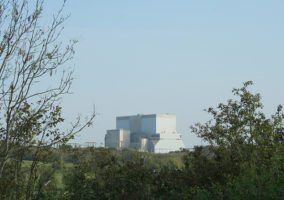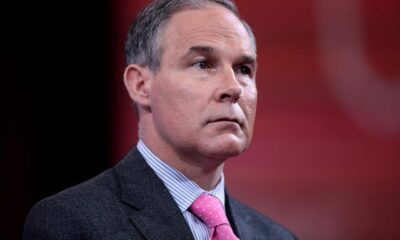

Energy
Cheaper And Quicker Alternatives To Hinkley
The UK can meet its energy and climate change targets even if the proposed Hinkley Point C nuclear power station is not built, a new report concludes – and alternatives work out cheaper.
The analysis, by the Energy and Climate Intelligence Unit (ECIU), finds that a mixture of established approaches including wind farms, cables connecting the UK grid with other countries and gas-fired power stations, together with measures to manage demand, would save the UK around £1 billion per year while keeping the lights on and meeting climate targets.
ECIU director Richard Black said the report shows that while Hinkley C could form part of the UK’s future energy mix, it is not essential.
“Despite years of debate on Hinkley, we’re still not sure whether or not it’s going to get built – the Prime Minister is due to make a decision next month, but even if she says ‘yes’ there are many other issues that could derail the project, including legal cases and EDF’s financial woes.
“So we wanted to know how essential Hinkley is for the ‘energy trilemma’ – keeping the lights on whilst cutting greenhouse gas emissions and keeping costs down,” he said.
“Our conclusion is that it’s not essential; using tried and tested technologies, with nothing unproven or futuristic, Britain can meet all its targets and do so at lower cost. So if Mrs May decides to go ahead with Hinkley, all well and good – if she decides not to, or if the project stumbles at a later stage, we have alternatives.”
The report found that:
· The UK could bring as much electricity into the grid as Hinkley would generate by building as few as four big wind farms (additional to those we will build anyway), or building three additional interconnector cables;
· We could negate the need for at least two-fifths of Hinkley’s electricity by cutting waste – using electricity more efficiently and productively;
· We could supply Hinkley’s 3.2GW of peak demand through demand-side response (additional to improvements we will make anyway), additional interconnectors, or additional gas-fired units generating at peak times – or a mixture of all.
All of these alternatives on their own work out cheaper than Hinkley:
· Replacing all Hinkley electricity with additional offshore wind farms would cut the average household bill by £10-20 per year;
· Replacing all Hinkley’s peak-time output with gas-fired units would save £16bn in infrastructure costs;
· Enhancing energy efficiency and demand-side response would save energy and therefore reduce bills.
ECIU Energy Analyst Dr Jonathan Marshall said the changing nature of electricity systems places a question mark over Hinkley’s relevance.
“The UK’s energy infrastructure is ageing and increasingly unreliable, so clearly we need to replace bits of it; and there’s no doubt that nuclear reactors generally supply low-carbon electricity reliably,” he said.
“But electricity systems are changing rapidly across the world, and it’s striking that figures such as the former head of National Grid and his Chinese counterpart have said recently that ‘always-on’ baseload generation is the way of the past.
“And I think our report illustrates the reason why things are changing – increasingly, smart, flexible and renewable equals cheap and reliable.”
Commenting, Paul Massara, CEO North Star Solar and former CEO of RWE npower, said that Hinkley C was the wrong solution to the UK’s future energy needs.
Whatever your view of nuclear power, what’s so striking is just how expensive, unwieldy and complex Hinkley C is.
“Whatever your view of nuclear power, what’s so striking is just how expensive, unwieldy and complex Hinkley C is. That the UK is even considering investing so much money in an unproven design based on outmoded technology is staggering enough,” he said.
“But when energy markets are so clearly heading in an entirely different direction, it looks like madness to push ahead with Hinkley. Listen to any informed energy market insider, and they will tell you that future grids will be smart, decentralized, flexible, and dominated by a mix of renewable energy, demand-side and energy efficiency measures, and storage.
“If that’s the case, then the question is very simple: what’s Hinkley for?”






























